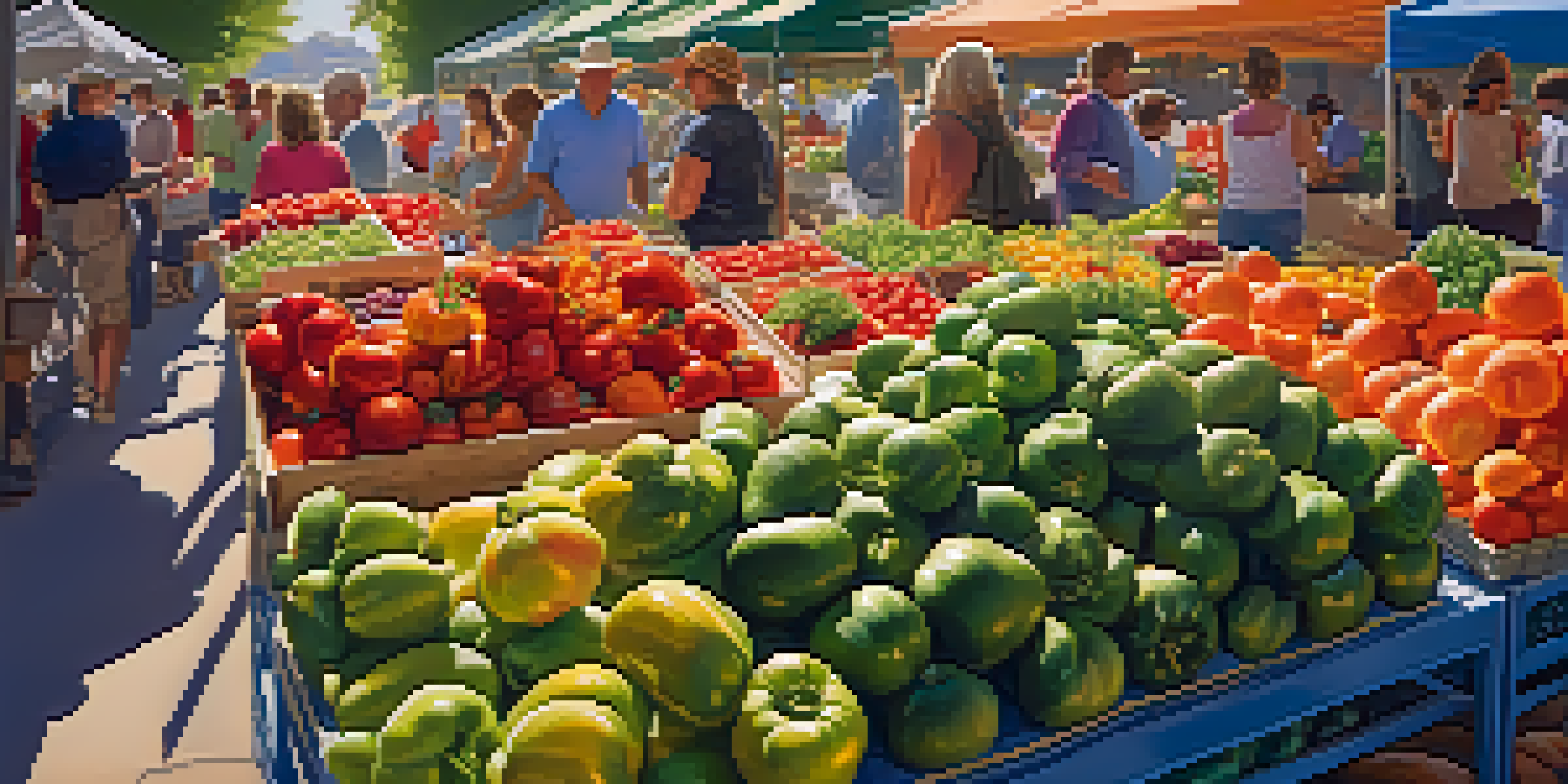How to Select the Best Organic Ingredients for Your Kitchen

Understanding Organic Labels: What to Look For
When shopping for organic ingredients, it's crucial to understand the labels. Look for certifications from recognized organizations, such as the USDA Organic seal, which ensures the product meets specific organic standards. This label indicates that no synthetic fertilizers or pesticides were used in the growing process, making it a safer choice for your kitchen.
The first wealth is health.
Additionally, familiarize yourself with terms like '100% Organic' and 'Made with Organic Ingredients.' While '100% Organic' means the product is entirely organic, 'Made with Organic Ingredients' must contain at least 70% organic components. Knowing these distinctions will help you make informed decisions as you fill your pantry.
Remember that not all organic products are created equal. Always check the ingredient list to ensure you're getting quality, whole food items rather than processed ingredients that may dilute the benefits of organic choices.
Prioritize Seasonal and Local Organic Produce
Selecting seasonal and local organic produce not only supports your community but also enhances your culinary experience. Seasonal fruits and vegetables are often fresher, tastier, and more nutritious since they are harvested at their peak. Plus, they usually come at a lower price point compared to out-of-season options that have traveled long distances.

Visiting local farmers' markets can be a delightful way to explore organic options. You'll often find a variety of produce that you won’t see in grocery stores, along with the chance to ask farmers directly about their growing practices. This connection can foster a greater appreciation for your food and the effort it takes to grow it organically.
Understand Organic Labels Clearly
Recognizing labels like 'USDA Organic' and '100% Organic' helps you choose safe, high-quality products.
Incorporating seasonal produce into your meals can lead to exciting culinary creations. For example, think about a vibrant summer salad with heirloom tomatoes and fresh basil, or a hearty autumn stew with root vegetables. These dishes not only taste better but also celebrate the seasons.
Choosing Organic Grains and Legumes: Key Considerations
When it comes to grains and legumes, organic options can be a game changer for your health. Look for whole grains, as they retain more nutrients than refined versions. Items like quinoa, brown rice, and whole grain pasta are excellent choices that provide fiber and essential vitamins.
You are what you eat, so don't be fast, cheap, easy, or fake.
Legumes, such as lentils and chickpeas, are another fantastic source of protein and can be more flavorful when organic. Ensure that the packaging states 'organic,' as some non-organic legumes may have been treated with harmful pesticides. Moreover, buying in bulk can often save you money and reduce packaging waste.
Experimenting with different grains and legumes can open up a world of culinary possibilities. For instance, try swapping white rice for farro in a stir-fry or using black beans in a salad. These small changes can enhance your meals while supporting your health.
Exploring Organic Dairy and Alternatives
When it comes to dairy, choosing organic can make a significant difference. Organic dairy products come from cows that are not treated with antibiotics or growth hormones, and they are usually fed organic feed. This ensures a higher quality product that is better for both you and the environment.
If you’re lactose intolerant or prefer plant-based options, there are numerous organic dairy alternatives available. From almond milk to coconut yogurt, these products often have fewer additives and preservatives compared to their non-organic counterparts. Always check the labels to ensure you're choosing options with minimal ingredients.
Choose Local, Seasonal Produce
Opting for local and seasonal organic produce not only supports your community but also enhances flavor and nutrition.
Incorporating organic dairy or alternatives into your diet can enhance the flavor of your meals. Whether it's drizzling organic yogurt over a spicy dish or adding organic cheese to a salad, the richness of these products can elevate your cooking.
Selecting Organic Meat and Seafood Responsibly
Choosing organic meat and seafood is essential for ensuring animal welfare and reducing exposure to chemicals. Look for meat labeled as 'organic' or 'grass-fed,' which indicates the animals were raised without antibiotics and hormones and had access to pasture. This not only promotes better health for the animals but also translates to higher-quality protein for you.
When it comes to seafood, consider looking for labels that denote sustainability, such as the Marine Stewardship Council (MSC) certification. This ensures that the fish you purchase is sourced responsibly, protecting both marine life and ecosystems. Fresh, organic seafood can add depth and flavor to your meals.
Cooking with organic meat and seafood can be rewarding. Imagine a perfectly grilled organic chicken marinated in herbs from your garden or a seared salmon fillet paired with seasonal vegetables. These choices not only benefit your health but also promote a more ethical food system.
Spices and Condiments: Go Organic for Flavor
Spices and condiments can significantly impact the taste of your dishes, so opting for organic versions can enhance your cooking. Organic spices are less likely to contain fillers or artificial additives, allowing you to enjoy pure flavors. Look for brands that seal their products to ensure freshness and potency.
When selecting condiments, such as ketchup or mustard, check for organic versions that use natural ingredients. This means fewer preservatives and more vibrant flavors. For example, organic tomato ketchup made from fresh tomatoes can elevate a simple burger or fry dish.
Store Organic Ingredients Properly
Proper storage techniques ensure the longevity and freshness of organic ingredients, maximizing their flavor and health benefits.
Experimenting with organic spices can open a world of flavor. Try using organic turmeric in a curry or organic chili powder for a kick in your next chili recipe. These small additions can transform your cooking and lead to healthier meals.
Storing Organic Ingredients for Longevity
Proper storage of organic ingredients is vital for maintaining freshness and flavor. Since organic products often lack preservatives, they can spoil faster than conventional items. Consider using airtight containers for grains and legumes to keep them dry and free from pests.
For produce, using breathable bags in the fridge can help extend their shelf life while allowing for air circulation. Additionally, keep fruits and vegetables separate, as some fruits release ethylene gas, which can cause nearby veggies to spoil more quickly.

Lastly, don’t forget to label your containers with dates. This simple practice can help you keep track of freshness, ensuring you use your organic ingredients while they're at their best. You'll not only save money but also enjoy tastier, healthier meals.